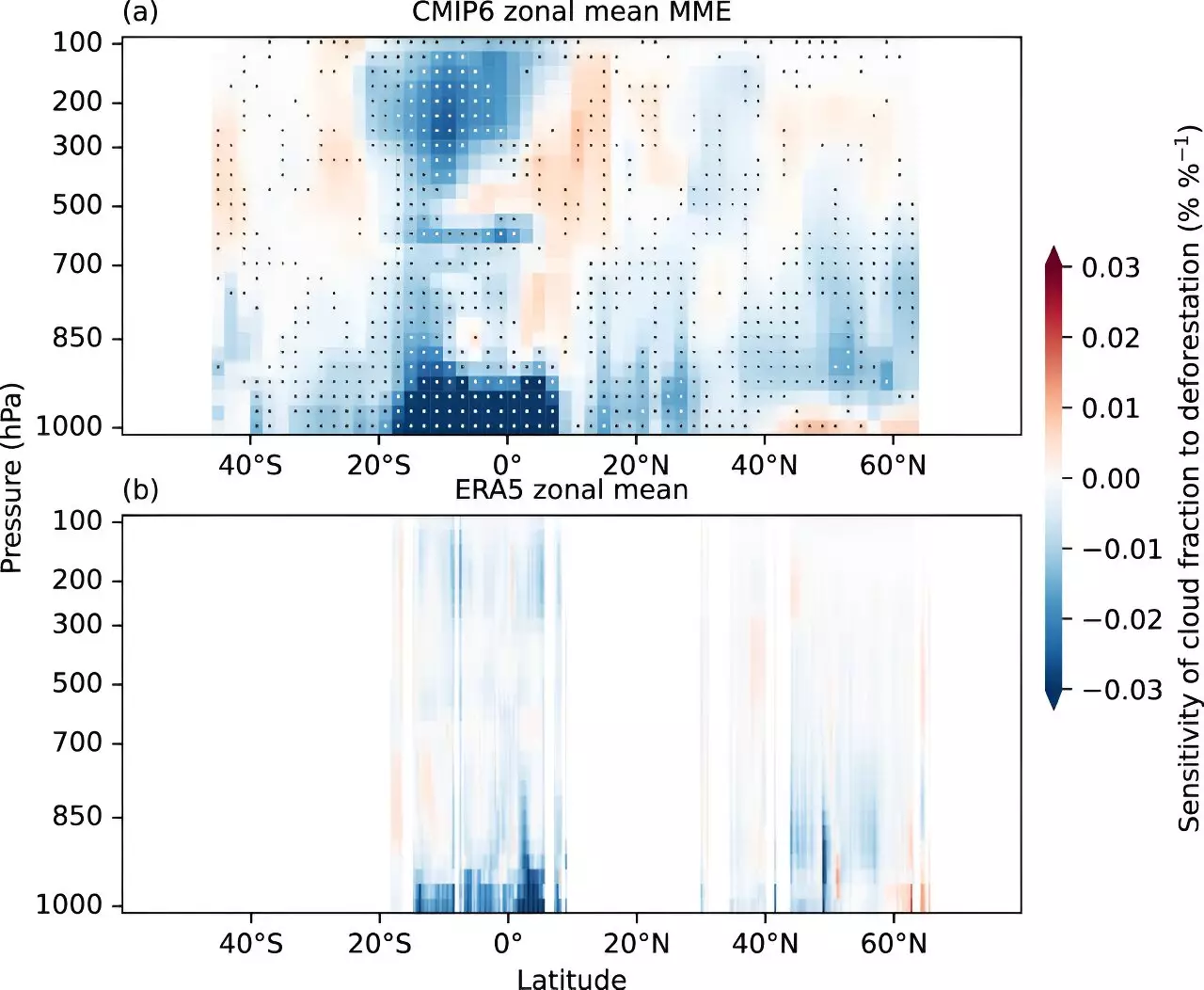Recent research conducted by a collaborative team from iDiv, Leipzig University, and Sun Yat-sen University in China has unveiled critical insights into the climatic implications of large-scale deforestation—insights that challenge previously held assumptions about forested areas’ environmental benefits. By employing computer simulations and an analysis of observational data, the researchers have illustrated that the impact of deforestation on climate extends far beyond the mere release of carbon dioxide, revealing an alarming reduction in cloud cover that significantly exacerbates warming effects in these regions.
Forests have long been recognized for their dual role in climate regulation: while they absorb carbon dioxide, a greenhouse gas that contributes to global warming, they also create conditions favorable for cloud formation. Trees and foliage not only provide shade but also emit water vapor, enhancing local humidity and consequently promoting cloud development. Interestingly, forests are darker than barren or cleared land, which naturally reflects lesser amounts of sunlight, facilitating a cooler environment. However, the recent study shows that the persistent loss of trees dramatically reduces cloud coverage, thus undermining this natural cooling mechanism.
The findings, published in the esteemed journal Nature Communications, indicate that the reduction in cloud cover nearly negates the cooling benefits that forests traditionally provide. Dr. Hao Luo, the lead author from Leipzig University, emphasized that both low-level and tropical high-level clouds are decreasing in regions affected by deforestation. This is notably concerning because low-level clouds serve as critical barriers, reflecting sunlight back into space and acting as natural temperature regulators. The detrimental alterations in surface heat dynamics—caused by the removal of trees—further limit the generation of these essential clouds.
A significant revelation of this study is the noted deficiency in research focused on how different meteorological processes in forested versus deforested regions influence cloud formation and the overall radiative balance. As pointed out by Professor Johannes Quaas, there is a pressing need to delve deeper into this arena, especially since it intersects both meteorology and biodiversity science. The researchers are currently examining how variations in forest biodiversity contribute to cloud formation—a necessary inquiry given the rapid degradation of global forest cover.
These findings impede the simplistic view of deforestation as merely a local ecological concern, illustrating its far-reaching global implications. With deforestation accelerating in various parts of the world, policymakers and environmentalists must reevaluate current strategies aimed at combating climate change. Efforts to preserve and restore forest ecosystems should be prioritized not just for their carbon-sequestering capabilities, but also for their critical role in maintaining the delicate balance of cloud dynamics and climate regulation. This new understanding sheds light on the importance of forests, urging a collective reassessment of their value beyond timber and land usage.
The recent study enhances our understanding of deforestation’s comprehensive climate effects, calling for immediate action to mitigate its impacts and safeguard our planet’s ecological future.


Leave a Reply